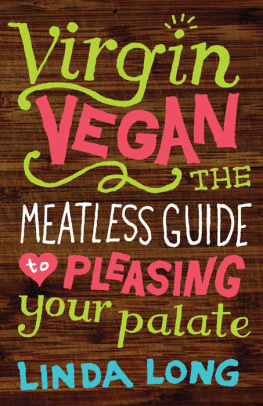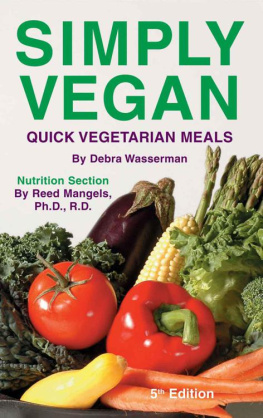Part 1
Ingredients A to Z
Including:
- Food ingredients
- Food additives
- Dietary supplements
- Drugs
- Cosmetic ingredients
- Household cleaning products
- Textiles, apparel, accessories
- Technical appliances
A
Acetic Acid Esters of Mono- and Diglycerides of Fatty Acids
(E 472a)
Can be vegetable or animal. Reaction product of acetic acid with . Emulsifiers, carriers and glazing agents in foods.
Acetyl Cysteine
(ACC)
From living or killed animals, can also be microbiological or synthetic. A derivative. Active ingredient in mucolytic medication. Antioxidant in cosmetics. Ingredient in some dietetic foods.
Acetyl Glucosamine
From killed animals. compound. Skin conditioner in cosmetics.
Acetyl Glutamic Acid
Mostly vegetable/synthetic, can also be animal. compound. Skin conditioner in cosmetics.
Acetyl Glutamine
Mostly vegetable/synthetic, can also be animal. Chemically altered . Skin conditioner in cosmetics.
Acetyl Tyrosine
Mostly vegetable/synthetic, can also be animal. compound. Tanning agent in cosmetics.
Acetylated Glycol Stearate
Can be animal or vegetable. Chemically altered . Emulsifier and emollient in cosmetics.
Acetylated Hydrogenated Lanolin
From living or killed animals. Chemically altered . Emollient in cosmetics.
Acetylated Hydrogenated Lard Glyceride(s)
From killed animals. Chemically altered . Emollient in cosmetics.
Acetylated Hydrogenated Tallow Glyceride(s)
From killed animals. Chemically altered . Emollient and emulsifier in cosmetics.
(Lanolin acetate)
From living or killed animals. Chemically altered . Antistatic, emollient and emulsifier in cosmetics.
Acetylated Lanolin Alcohol
From living or killed animals. Chemically altered . Antistatic, emollient and emulsifier in cosmetics.
Acetylated Lanolin Ricinoleate
From living or killed animals. Chemically altered . Antistatic and emollient in cosmetics.
Acetylated Lard Glyceride
From killed animals. Chemically altered . Emollient in cosmetics.
Acetylated Sucrose Distearate
Can be vegetable or animal. Compound of . Emollient in cosmetics.
Acetylmethionyl Methylsilanol Elastinate
From killed animals. Chemically altered . Antistatic, skin and hair conditioner in cosmetics.
Acrylates/Ceteth-20 Itaconate Copolymer
Acrylates/Ceteth-20 Methacrylate Copolymer
Mostly vegetable/synthetic, can also be partly animal. Polymer compounds of . Viscosity controlling agents in cosmetics.
Acrylates/Steareth-20 Itaconate Copolymer
Acrylates/Steareth-20 Methacrylate Copolymer
Acrylates/Steareth-50 Acrylate Copolymer
Can be vegetable/synthetic or animal/synthetic. Polymer compounds of . Film forming and viscosity controlling agents in cosmetics.
Acrylates/Vinyl Isodecanoate Crosspolymer
Mostly vegetable/synthetic, can also be partly animal. Polymer compound of . Film forming and viscosity controlling agent in cosmetics.
Activated Carbon
(Activated charcoal. Carbo animalis [animal charcoal]. Carbo medicinalis [medicinal charcoal]. Carbo vegetabilis [vegetable charcoal. E 153])
Vegetable, synthetic or from killed animals. Fine-grained, porous carbon with a large internal surface area. Obtained by charring carbon-rich substances, such as wood, nutshells, coffee beans, blood, bones, lignite, coal or petroleum. Medicinal charcoal is derived solely from plant matter. Used for extracting undesired or harmful substances such as colors, flavors or odors, for instance in chemical and pharmaceutical industries, water and sewage treatment, and ventilation/air conditioning; for purifying and bleaching foods, e.g. starch or In cigarette filters. In some shoe inlays. Used for treating poisoning and diarrhea, and for cleansing wounds.
Adenosine
Adenosine Cyclic Phosphate
Adenosine Phosphate
Adenosine Triphosphate
(Adenosine monophosphate [AMP]. Adenosine diphosphate [ADP]. Adenosine triphosphate [ATP])
Synthetic. Compounds of adenine (constituent of ) that play an important part in the energy balance of all living cells. Skin conditioners in cosmetics.
Adeps Bovis
From killed animals. , from cattle. Emollient in cosmetics.
Adeps Cervidae
Adeps Lanae
Adeps Solidus
Adeps Suillus
From killed animals. Purified . Emollient in cosmetics.
Adipic Acid
(E 355)
Synthetic. An organic acid. Occurs naturally in beets. Industrial production from petroleum derivatives. Buffering agent in cosmetics. Source for additional cosmetic substances, e.g. in conjunction with . Acidity regulator in foods.
Adrenalin
(Epinephrin. Suprarenin)
Synthetic. Stress hormone and neurotransmitter produced in animals adrenal glands. Industrial synthesis from . Emergency medication (for cardiac arrest or allergic reactions) or for constricting blood vessels (for instance, in association with local anesthesia and to reduce bleeding).
ALA
Alanine
(Aminopropanoic acid)
Can be microbiological or synthetic. Nonessential .
Alanine Glutamate
Mostly vegetable/synthetic, can theoretically also be animal. Compound of . Skin conditioner in cosmetics.
Alanine/Histidine/Lysine Polypeptide Copper HCl
Mostly vegetable/synthetic, can also be animal. Copper compound of . Skin conditioner in cosmetics.
(Egg white)
From living or killed animals. Clear, liquid in birds eggs surrounding the yolk. Obtained from captive birds (e.g. chickens) or gathered from wild birds nests. In foods, e.g. as a binding agent in baked goods. For fining/clarifying wine and other beverages. In nutritional supplements. Film forming agent in cosmetics. In adhesives and as a fixative for textile colors. Fertilizer. Leather care substance. Additive in animal food.
Albumin
From living or killed animals. General term for soluble ). Also in milk, muscle and plant seeds. Often isolated from cattle blood. Binding agent in adhesives, e.g. plywood glue. Bovine albumin is used in laboratory diagnostics and as a nutrient solution for cell cultures. Certain intravenous solutions contain human albumin.
Alcloxa
Aldioxa
Synthetic, can theoretically also be animal. Aluminum salts of . Antimicrobial, astringent and soothing substances in cosmetics (e.g. in deodorants, antiperspirants, shaving products and childcare products).
Aleuritic Acid
From living and killed animals. Variant of . Obtained by saponification of shellac resin. Used in perfumes (e.g. musk scent). Skin conditioner in cosmetics.
Alkylglycerols
From killed animals. Hydrocarbon lipid compounds. Occur naturally in .
Allantoin
Synthetic, can theoretically also be animal. Degradation product of metabolism of most mammals. Also in many plants, such as comfrey, black salsify, horse chestnut. Traditionally extracted from cows urine or comfrey extract. For economic reasons, industrially produced allantoin is always synthetic. Soothing agent and plasticizer in cosmetics.
Allantoin Acetyl Methionine
Synthetic, can theoretically also be animal. Compound of . Skin protecting substance in cosmetics.









